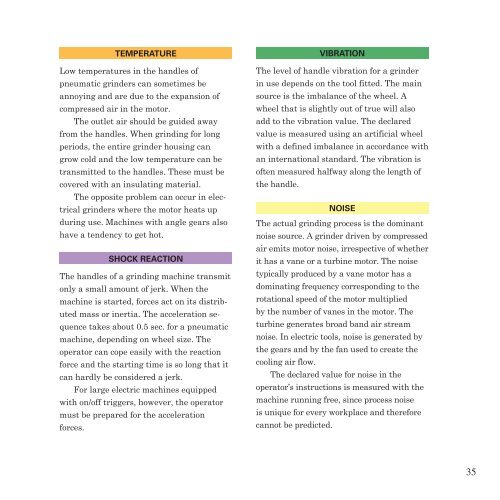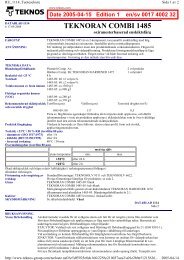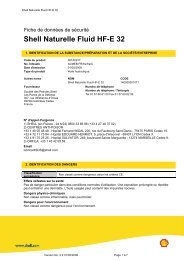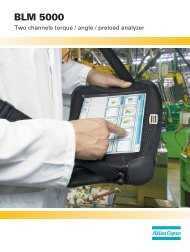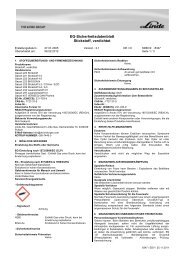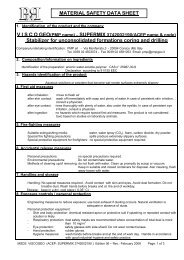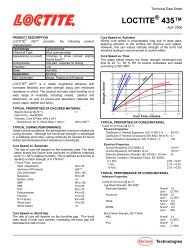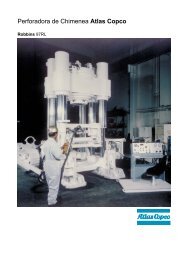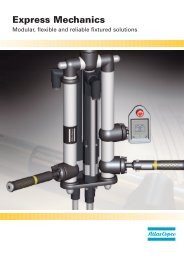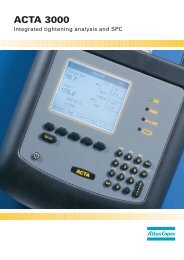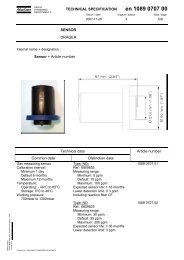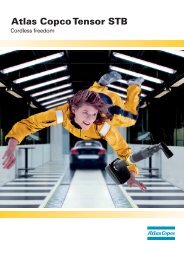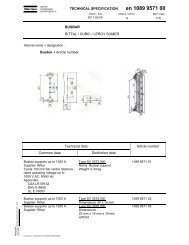Ergonomics - Atlas Copco
Ergonomics - Atlas Copco
Ergonomics - Atlas Copco
You also want an ePaper? Increase the reach of your titles
YUMPU automatically turns print PDFs into web optimized ePapers that Google loves.
teMPeratUre<br />
Low temperatures in the handles of<br />
pneumatic grinders can sometimes be<br />
annoying and are due to the expansion of<br />
compressed air in the motor.<br />
The outlet air should be guided away<br />
from the handles. When grinding for long<br />
periods, the entire grinder housing can<br />
grow cold and the low temperature can be<br />
transmitted to the handles. These must be<br />
covered with an insulating material.<br />
The opposite problem can occur in elec-<br />
trical grinders where the motor heats up<br />
during use. Machines with angle gears also<br />
have a tendency to get hot.<br />
SHoCK reaCtion<br />
The handles of a grinding machine transmit<br />
only a small amount of jerk. When the<br />
machine is started, forces act on its distrib-<br />
uted mass or inertia. The acceleration se-<br />
quence takes about 0.5 sec. for a pneumatic<br />
machine, depending on wheel size. The<br />
operator can cope easily with the reaction<br />
force and the starting time is so long that it<br />
can hardly be considered a jerk.<br />
For large electric machines equipped<br />
with on/off triggers, however, the operator<br />
must be prepared for the acceleration<br />
forces.<br />
ViBration<br />
The level of handle vibration for a grinder<br />
in use depends on the tool fitted. The main<br />
source is the imbalance of the wheel. A<br />
wheel that is slightly out of true will also<br />
add to the vibration value. The declared<br />
value is measured using an artificial wheel<br />
with a defined imbalance in accordance with<br />
an international standard. The vibration is<br />
often measured halfway along the length of<br />
the handle.<br />
noiSe<br />
The actual grinding process is the dominant<br />
noise source. A grinder driven by compressed<br />
air emits motor noise, irrespective of whether<br />
it has a vane or a turbine motor. The noise<br />
typically produced by a vane motor has a<br />
dominating frequency corresponding to the<br />
rotational speed of the motor multiplied<br />
by the number of vanes in the motor. The<br />
turbine generates broad band air stream<br />
noise. In electric tools, noise is generated by<br />
the gears and by the fan used to create the<br />
cooling air flow.<br />
The declared value for noise in the<br />
operator’s instructions is measured with the<br />
machine running free, since process noise<br />
is unique for every workplace and therefore<br />
cannot be predicted.<br />
35


